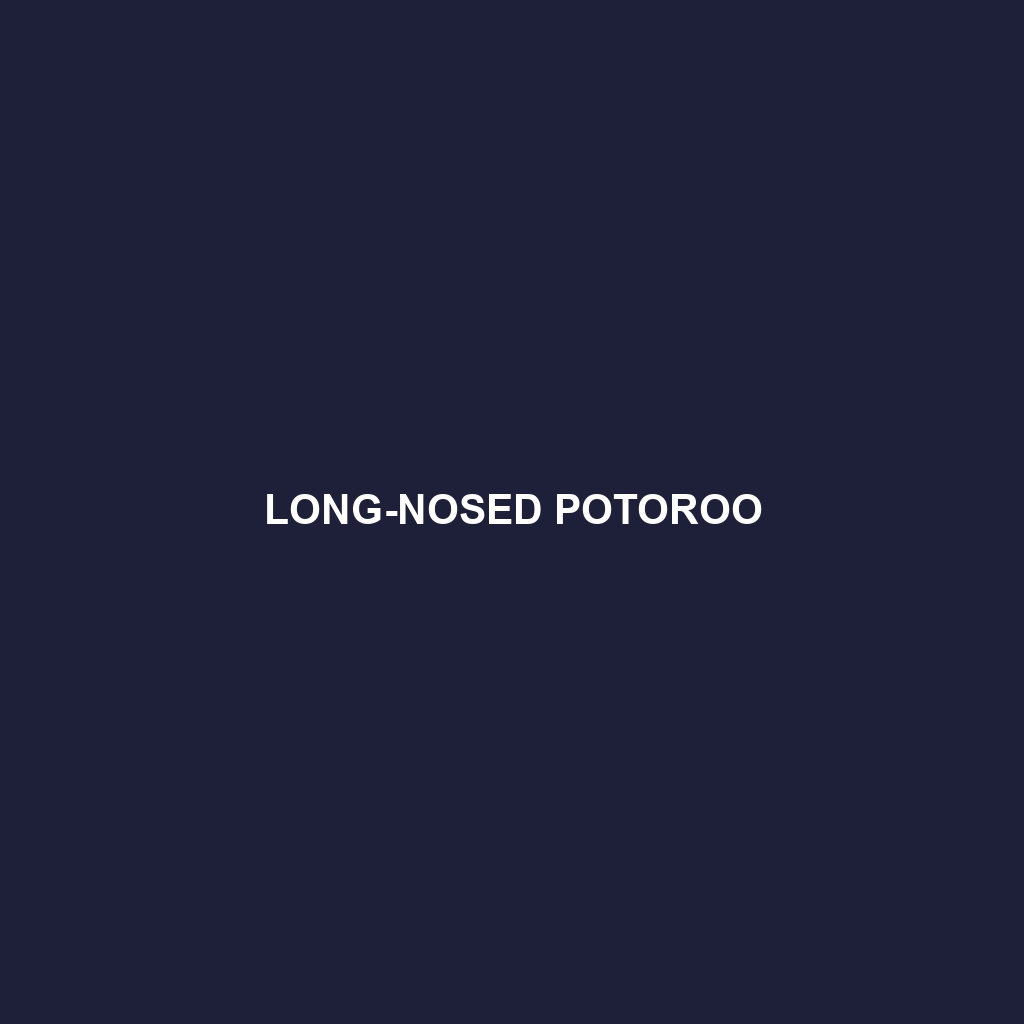Long-nosed Potoroo: A Detailed Description
The Long-nosed Potoroo (Potorous tridactylus) is a small, nocturnal marsupial native to the southeastern parts of Australia, including Tasmania. This endearing creature is known for its long, pointed snout, which it uses to forage for food. The Long-nosed Potoroo plays a crucial role in its ecosystem by helping to disperse fungal spores and seeds, contributing to forest health.
Physical Characteristics
Size: Adults typically weigh between 660 grams to 1.2 kilograms (1.5 to 2.6 pounds) and measure about 34 to 40 centimeters (13 to 16 inches) in body length, with an additional 15 to 24 centimeters (6 to 9.5 inches) for the tail.
Coloration: They have a soft, dense fur coat that ranges in color from grey to brown, often with a slightly paler underbelly. The fur coloration aids in camouflaging them in their natural habitat.
Special Features: The most distinguishing feature is its elongated snout, which is flexible and covered with sensitive whiskers. This adaptation is crucial for their foraging behavior. They also have strong hind legs adapted for hopping, similar to their larger relatives, the kangaroos, but they generally move by a slow, shuffling gait.
Behaviors
Social Interactions: Long-nosed Potoroos are generally solitary animals, coming together only for mating. They are shy and elusive, often relying on their keen senses of smell and hearing to detect predators and other threats.
Feeding Habits: They are omnivorous, with a diet consisting mainly of fungi, roots, tubers, fruits, seeds, and insects. Their foraging activities, particularly for underground fungi, play a vital role in spreading fungal spores that are essential for plant health.
Ecological Role: As ecosystem engineers, their digging behavior helps to aerate the soil, which enhances nutrient cycling, water infiltration, and seedling growth. By dispersing fungal spores and seeds, they support plant diversity and forest regeneration.
Habitats
Natural Habitat: Long-nosed Potoroos inhabit wet and dry sclerophyll forests, coastal heaths, and dense undergrowth in temperate rainforests. They prefer areas with dense ground cover to provide protection from predators.
Adaptations: Adaptations to their habitat include their cryptic coloration for camouflage and their keen senses for detecting food and avoiding danger. Their elongated snout and strong claws are specially adapted for digging up underground fungi and other food items.
Conservation Status
Current Status: The IUCN Red List classifies the Long-nosed Potoroo as Near Threatened. Their populations are declining due to habitat destruction, predation by introduced species such as foxes and cats, and human encroachment.
Conservation Efforts: Conservation initiatives include habitat restoration, predator control programs, and research into their ecology and behavior to inform better management practices. Protected areas and wildlife corridors are also vital in conserving their populations.
Fascinating Fun Facts
Nesting Habits: Long-nosed Potoroos construct nests out of grass and leaves, creating a cozy, hidden retreat to sleep during the day.
Breeding: Female potoroos have a unique reproductive system with the ability to pause the development of their embryo—a phenomenon known as embryonic diapause. This allows them to time the birth of their young to coincide with favorable environmental conditions.
Digging Skills: Their foraging behavior involves creating small conical holes in the ground, which can often be seen in their habitat. These digging activities are crucial for soil health and plant growth.
The Long-nosed Potoroo is a remarkable example of the intricate balance within ecosystems and the significant role even small animals play in maintaining environmental health. Conservation of this unique marsupial ensures the continued vitality of the habitats they help sustain.
